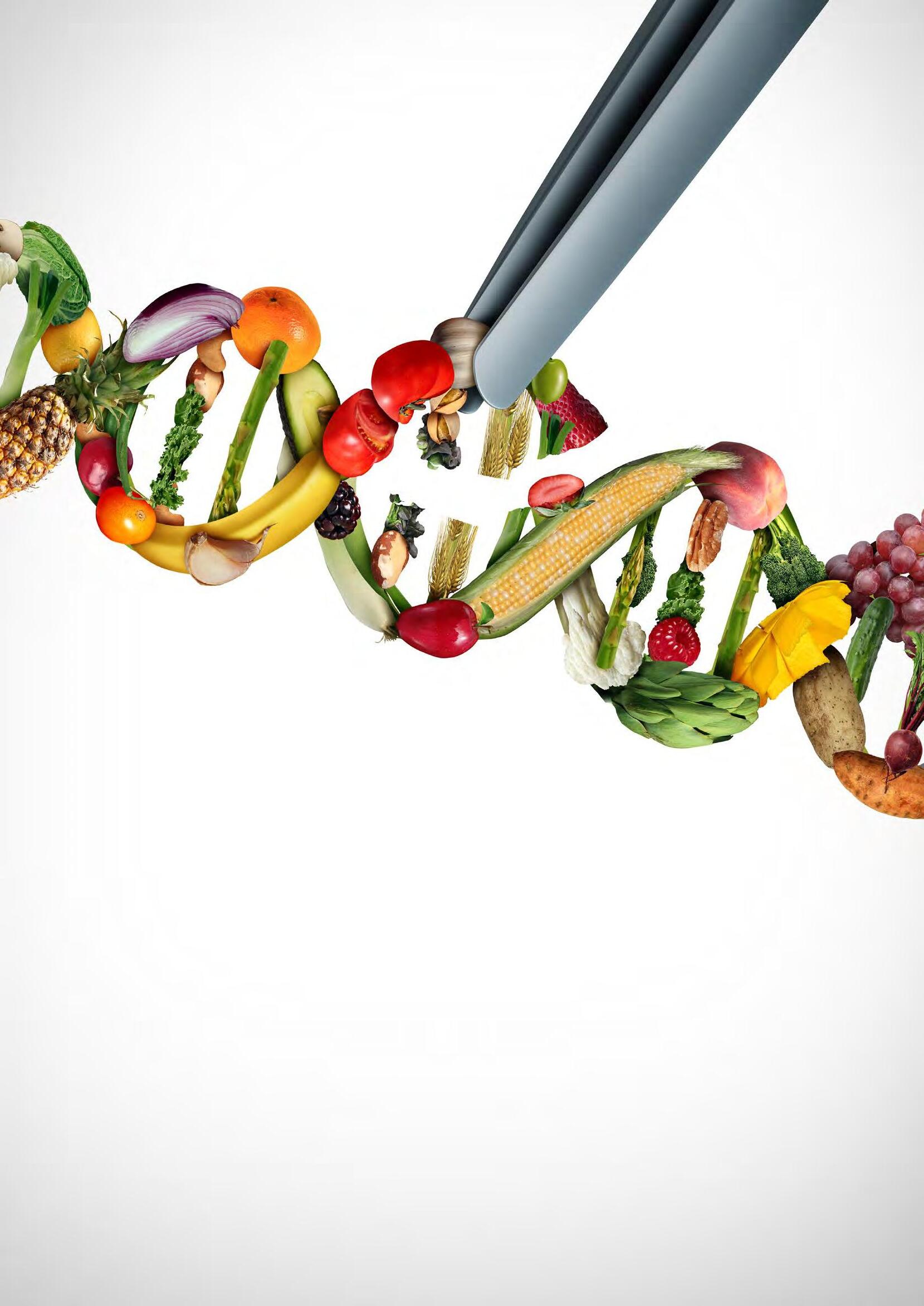
7 minute read
To edit or not to edit?
from Segment magazine 4
The past decade has seen major advancements in the field of genetic technologies, creating a new discussion on how these technologies should, could or would be used. Veronika Meduna investigates how different countries are dealing with these new techniques and where New Zealand sits in the debate.
When the Environmental Protection Authority (EPA) approved a gene-editing blood cancer immunotherapy in August 2022, medical researchers hailed it as a huge step forward in New Zealand’s stance on genetic technologies. For patients with multiple myeloma, the second most common blood cancer in New Zealand, the only option had been to seek this potentially life-saving treatment overseas, at their own cost.
Advertisement
The therapy, known as CAR T-cell treatment, involves the harvesting and genetic editing of a patient’s own immune cells to turn them into a personalised living medicine, which, once re-inserted, goes on to recognise and kill myeloma cells.
It’s hard to imagine significant opposition to EPA’s decision, but because of New Zealand’s current regulations governing genetic technologies, this approval still counts as an uncontrolled release of a genetically modified organism (GMO).
For the Prime Minister’s Chief Science Adviser, Professor Dame Juliet Gerrard, the arrival of genetically modified therapeutics is heartening and represents a “significant step forward for the ease of use of modern medicines”. But it also reinforces a point she made in a 2019 briefing to the Prime Minister: our current legal and regulatory frameworks for gene editing are no longer fit for purpose.
“The scientific and legal definitions are sometimes at odds and, importantly, definitions of key concepts are inconsistent across acts. For example, at the intersection of the Medicines Act and the Hazardous Substances and New Organisms Act (HSNO), there is confusion about whether modifying human cells creates a legally defined ‘new organism’.”
Just as the Medicines Act is being modernised and replaced with the Therapeutics Product Bill, Gerrard would like the HSNO Act to be updated to make it “future-proof, built on a risk-based approach rather than a technology-based one, to allow the legislation and regulatory framework to cope with the rapid evolution of techniques”.
Another recent development illustrates the confines of the current regulatory process even more starkly. In July, a New Zealander became the first person in the world to receive gene-editing treatment as part of a clinical trial run by US company Verve. The biotech company is pioneering an approach designed to make a single spelling change in a patient’s liver DNA, to permanently turn off a gene that causes elevated amounts of LDL cholesterol, which in turn raise the risk of heart attacks and strokes, both leading causes of death.
The Gene Technology Advisory Council and MedSafe both approved that the trial could be conducted in New Zealand, but the research that led up to it would have been very difficult to carry out here, Gerrard says.

“It is frustrating for researchers when experiments in containment in the laboratory have tougher regulatory hurdles than doing the experiment in humans.”
Gerrard’s briefing to the Prime Minister was released to complement a comprehensive report by the Royal Society Te Apārangi that explored potential uses of gene-editing tools in health, pest control and primary production. It prompted Minister for the Environment David Parker to request advice from officials on whether any regulatory hurdles ought to be lowered “to enable medical uses that would result in no heritable traits, or laboratory tests where any risks are mitigated by containment”. At the time, Parker said the government would not propose a “root and branch” review of the HSNO Act, but would look at regulatory settings for biomedical and laboratory-based research.
Since then, several other organisations, including the Commerce and the Climate Change Commissions, have called for a renewed debate about genetic editing and a re-think of the boundaries New Zealand wants to place on it. Nobody is calling for a loosening of restrictions on widespread release, but rather a fundamental shift away from focusing regulation on the technology itself to assessing the risks and benefits associated with each potential use on a case-by-case basis. “There is a fundamental question of whether to regulate tools or products,” Gerrard says. “You can 3D print guns, but I haven’t heard people calling for a ban on 3D printing. With a tool as powerful and far reaching as genetic editing, there is a need for a sophisticated framework.”
During the two decades since the Royal Commission on Genetic Modification issued its recommendations, enshrining the principle of precaution in law, genetic technologies have changed enormously. At the time, research projects focused on transferring genetic traits — by shifting genes — between different species, using technologies that lacked precision and evoked fears of “Frankenfoods”.
Because the current law and regulations are framed around technologies available back then, they don’t reflect the step-change that arrived with gene editing, and CRISPR-Cas technology in particular, says Plant & Food Research Chief Scientist Dr Richard Newcomb.

“Whereas with the original genetic modification technology, we didn’t know where genes were going to land in the genome, with this new technology, we target the changes to specific locations in the genome.
Not only that, we can make everything from a change in a single letter to adding a whole gene at that precise location. I think the gene-editing CRISPR technology deals with many of the issues people had with the original technology.”
Perhaps the most significant difference between GMOs and modern gene editing is that the latter produces changes that could appear naturally, through mutation, or could be achieved through conventional breeding methods. Proponents argue gene editing is simply faster and more accurate. And given the rapid progress in whole-genome sequencing and subsequently deeper understanding of gene expression within plant and animal species of interest, there’s now no need to import genetic material across species boundaries. “You don’t have to add anything. You can just make a very small minor deletion or change of a single nucleotide. In that sense, you can make something that’s akin to a natural mutation,” Newcomb says.
For crops, the opportunities seem endless — and researchers and biotech start-ups across the world have been making good use of them. Late in 2021, a Japanese company commercialised a CRISPRedited tomato, the first such functional food to reach the consumer market. It contains higher amounts of γ-aminobutyric acid (GABA), a naturally occurring compound that works as a neurotransmitter in the brain and is thought to lower blood pressure. The gene tech used to make the tomato was linked with digital tech to market it solely online, rather than selling more conventionally through supermarkets.
Other international projects to create gene-edited crops or livestock include corn that produces more kernels per cob, potatoes that brown less when peeled, mustard greens without the bitter taste, and slickhaired cattle that tolerate heat. In March 2022, the US Food and Drug Administration green-lit the marketing of meat from the gene-edited heat-tolerant cattle.

Dr Newcomb says New Zealand did OK during the past two decades without being able to develop GMO
Tomatoes naturally contain a compound thought to lower blood pressure, and a new gene-edited plant has been produced with higher concentrations.

But now, he says New Zealand is increasingly out of step with its trading partners and international food regulations. The USA does not differentiate gene editing from conventional breeding. China is among a number of countries whose rules are open to gene editing of crops. Following Brexit, the UK is also moving towards lighter regulation, and even within the European Union, where strict regulations are most closely aligned with those in New Zealand, the discussion could soon be back on the agenda.
In 2018, the EU’s highest court decided that gene editing should come under GMO regulations, giving high priority to potential risks. But the war in Ukraine is strangling imports and drought has reduced harvests across several European countries, and the European Commission has confirmed it would propose easing regulations for some specific gene-editing technologies, possibly as early as mid-2023.
Closer to home, New Zealand’s regulations are increasingly inconsistent with those of Australia, which no longer regulates genetic editing unless new DNA is included. Food Standards Australia New Zealand (FSANZ) is currently undergoing its own review, proposing much lighter regulation and no labelling of gene-edited foods (as opposed to genetically modified foods). “If that goes through and is ratified, then that would put our food standards out of step with our HSNO Act,” says Dr Newcomb. “We’d be able to import geneedited foods with a much lower hurdle than making [such] foods in New Zealand.”
Te Puna Whakaaronui, a new think tank for the food and fibre sector, recently added its voice to calls for a renewed nationwide discussion about the “tough topic” of genetic engineering, and the potential use of CRISPR.
In a report on “reframing opportunities”, chair Lain Jager lays out several ways in which gene tech could help to make the sector more resilient and sustainable: disease-resistant plants, added nutritional traits, reduced use of fertilisers and pesticides, faster breeding — and at the high-tech end of possibilities, cell cultures and precision fermentation to create cellbased meats or milks.
However, a Research First survey of consumer attitudes carried out in July 2022 suggests people continue to have deeper concerns about genetically altered foods than about the use of gene editing in therapeutics. While a third of respondents would support gene-edited fresh fruits and vegetables being for sale in New Zealand, 43% expressed concern, and almost half would worry about buying products from animals that had been fed gene-edited food. The survey also shows that awareness and knowledge of contemporary gene editing is much lower than for genetic modification.
For Dr Newcomb, the real value for New Zealand in being able to use gene editing is not to produce new functional crops, but to address climate change and environmental damage — for example, the continued spread of wilding pines. “If we could create sterile pines using this technology that didn't produce pollen or produced infertile pollen, that would be incredibly useful.”
Gene editing could also generate plants that flower more quickly, which could “cut our [breeding] time from three to four years down to one year, so that we could actually breed new cultivars that would be climate resilient. With climate change marching on and the timeframes getting shorter and shorter, even around governments to meet their emissions targets, our current breeding programmes are just too slow to be able to make those changes, whether it’s animal breeding to create animals that don’t belch methane, or plant breeding programmes that are going to evolve plants that are resilient to the changing climate.” •









